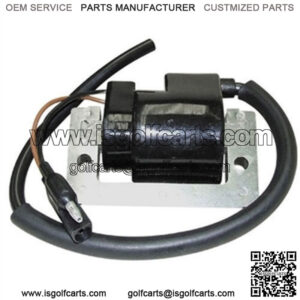Testing the coils on a golf cart engine is an easy procedure and can indicate to you whether an electrical problem on your golf cart is being caused by a bad ignition coil or a problem deeper in the engine. Coils are not a part of the electrical system of electric golf carts, but rather are part of gasoline-powered carts and their ignition system for firing the spark plugs. It’s a good idea to have your golf cart’s owner’s manual open to the section on troubleshooting electrical components for information specific to your particular golf cart.
Step 1
Raise the seat on your golf cart and locate the ignition coil according to your manufacturer’s owner’s manual. Golf cart manufacturers all mount their coils in slightly different locations. It is black and cylindrical with a metal heat sink on each side and will have a single, thin wire coming out of one end and a thicker wire coming out of the other end.
Step 2
Disconnect the negative terminal from the golf cart’s battery using a wrench.
Step 3
Disconnect the wires that lead to the ignition coil. The thicker wire will be attached to a wiring harness you can unplug. The thinner wire is a pin connector you can pull out by hand.
Step 4
Place the black test lead from the volt/ohm meter on the negative terminal of the coil. You will notice on the case of the coil a plus (“+”) or minus (“-“) sign indicating which lead is which. Attach the red lead to the positive terminal.
Step 5
Select the “Ohm” setting on your volt/ohm meter and read the display. The golf cart coil should register as more than 3.7 ohms, but less than 5.2 ohms. If the coil registers outside this range, replace the coil with a new unit. They are not repairable.
“Keyword”
“e z go golf cart ignition coil test”
“testing golf cart ignition coil”
“how to test ignition coil with multimeter”
“ignition coil resistance chart”
“club car ignition coil”
“how do you check a ford ignition coil”
“club car ignition coil wiring”
“ezgo pulsar coil test”

